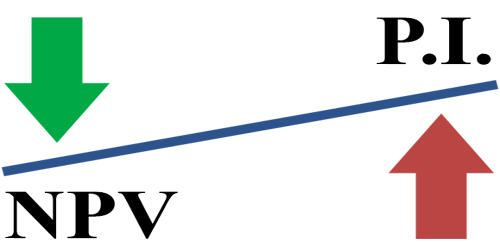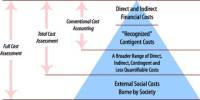The Profitability Index (PI) measures the ratio between the present value of future cash flows and the initial investment. It is a tool that investors can use to understand the degree of expected profits that may come from a specific investment. The index is a useful tool for ranking investment projects and showing the value created per unit of investment.
Disadvantages of Profitability Index (PI)
(i) It is difficult to understand the interest rate or discount rate. You’re using a best-guess estimate as to what future cash flows will be, using current information. In the world of business, there are no guarantees. What may be a lucrative opportunity today could be a terrible investment idea tomorrow.
(ii) It requires an estimate of the cost of capital to calculate. You’re also forced to estimate the opportunity cost, which is defined as a cost that occurs by not accepting alternatives which could have generated a positive cash inflow.
(iii) It is difficult to calculate the profitability index if two projects having different useful life. The profitability index tends to score short-term gains better than long-term gains, which means some companies may choose the wrong project to complete what comparing their options.
(iv) The profitability index of a firm might not, sometimes, provide the correct decision while being used to compare mutually exclusive projects under consideration. In mutually exclusive projects where the initial investments are different, it may not indicate the correct decision. There is a chance of drawing an incorrect decision while comparing mutually exclusive capital projects.
(v) In capital budgeting world sunk costs are not included in estimating the outflows. The profitability index does not include these incurred costs as part of the cash outflows which are calculated. Hence, these costs might be huge, and ignoring these costs might sometimes become very difficult for the corporate finance team.
(vi) The corporate finance team needs to sit with the management of the company to take into account the business scenario. Management might be too optimistic about their project and therefore cash flow projections might be too high.
The profitability index is one of the numerous ways used to quantify and measure the efficiency of a proposed investment. It is one of many tools that can be used to determine the full potential of an investment opportunity. It must be used carefully, however, because much of the information that is used to calculate results are based on estimates.
















